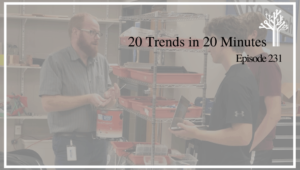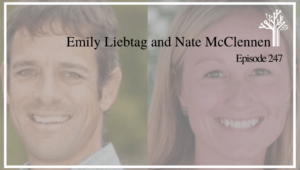Why Wyoming Should Be a Digital Learning Leader

I grew up hiking in the Rockies and the Tetons. My wife’s family farmed the plains of eastern Colorado. We both appreciate wide-open spaces.
When I was a public school superintendent in Washington State, we started what was probably the first K-12 online school in the country, Internet Academy. I appreciate quality options for families.
Fifteen years ago, my district’s secondary schools had 1:1 access to computers. Since then, the opportunity has dramatically improved with cheap devices, powerful applications, new school models, and better access to broadband.
As a director of the International Association for K-12 Online Learning (iNACOL), I support policies likely to extend access to full and part time online learning as well as the adoption of school models that blend online and traditional forms of instruction. Boosting college and career preparation requires a mix of opportunities–choice takes many forms–full and part time online learning and blended options.
More online learning. Students and families benefit from full time access to online learning for many reasons–health, bullying, mobility, and family circumstances. Speed skater Apolo Ohno was one of our first graduates at the Internet Academy. Full time online learning is the best public education option for some families–it’s the only option for some.
Even in rural states, full time online learning is a great option. Idaho, for example, has eight full time online virtual charter schools serving about 5,000 students. Many of the full time programs partner with providers like Connections or K12 in order to ensure delivery of a high quality full time online program.
Part time online learning is another growing area. Florida makes the best case for access to part time online learning with over 400,000 enrollments. West of the divide, Utah is a leader in course choice with multiple providers of part time online learning.
In addition to the expansion of virtual charter schools, which serve more than 250,000 students, the majority of K-12, school districts report to be offering or planning online offerings. More than two million K-12 students did at least some of their learning online last year.
We’ve reached a point in time where there is simply no excuse for not providing every student in America full access to well taught college preparatory courses, Advanced Placement courses, foreign language courses, and college credit courses–regardless of where they live.
More blended learning. Blending the benefits of online learning with onsite support systems is the great opportunity of our time. Military and corporate trainers are becoming increasingly sophisticated in their ability to create rapid pathways to mastery. Most institutions of higher education are making the shift to digital and soon the majority of college students will do at least a portion of their learning online.
In K-12, blended models–like Rocketship, Summit, and Carpe Diem–are among the highest performing schools in California and Arizona and are expanding nationally. Reviewing profiles of the Next Generation Learning Challenge is a great way to envision the personalized future of learning.
The Christensen Institute describes blended learning as environments where “students learn at least in part through online delivery of content and instruction with some element of control over time, place, path, and/or pace.” More narrowly, I define blended learning as a shift to an online delivery for a portion of the day to make students, teachers and schools more productive.
There are three key benefits of blended learning for students:
-
Customization: adaptive and personalized learning;
-
Motivation: engaging experiences that boost persistence; and
-
Equalization: access to great teaching and extended learning opportunities.
Blended learning is saving and improving rural schools. By incorporating online learning it is possible to run a great high school for 100 students. A small school can offer the same breadth of offerings as a big school while retaining strong community relationships.
We also believe that blended learning is improving working conditions and career options for teachers.
Better policy. Digital Learning Now! is a forward leaning framework for state policy. It was developed in 2010 by 100 bipartisan experts over a 100 day period. For the last two years, the Foundation for Excellence in Education has issued state report cards against the 10 Elements of High Quality Digital Learning, which in short, call for:
-
All students to have access to full and part-time online learning, multiple providers, and blended learning environments;
-
Students progress based on demonstrated competence with end of unit/course assessments available on demand (or on a frequently scheduled basis);
-
Performance-based certification with reciprocity;
-
Student proficiency and growth as the metrics for evaluating the quality of schools/programs;
-
Funding that is weighted, flexible, portable and performance-based; and
-
Infrastructure that supports digital learning.
New goals and opportunities–college and career ready standards and the shift to personal digital learning–make it an appropriate time to rewrite the education code. Removing barriers and aligning policies with emerging opportunities is key to improvement and innovation.
Leadership. Wyoming has a great opportunity with Rich Crandall leading the Department of Education. Crandall has a powerful vision for the path forward. States like Utah and Arizona have been leaders in expanding digital learning opportunity. Blended learning school models from Denver, Salt Lake, and San Jose are pointing the way forward.
Wyoming has the opportunity to make a digital leapfrog–a quick advance that will benefits its students and economy. Strong digital learning and charter policy will allow choice and innovation.
[Disclosures] Digital Learning Now!, Connections, and K12 are Getting Smart Advocacy Partners.






0 Comments
Leave a Comment
Your email address will not be published. All fields are required.